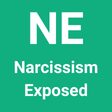Free Trauma Bond Assessment Checklist: Understand Psychological Conditioning in Relationships
Are you unable to leave someone despite knowing the relationship is harmful? Do you feel addicted to someone who hurts you or confused about why you still love your abuser? This professional trauma bond assessment helps you identify psychological conditioning patterns that create addiction-like attachment to harmful relationships.
Why You Need This Trauma Bond Checklist
The Trauma Bonding Problem: Trauma bonding is a strong emotional attachment that develops through cycles of abuse, punishment, and positive reinforcement. Trauma bonding creates biochemical addiction in your brain, making it feel impossible to leave despite knowing the relationship is harmful. This conditioning hijacks your brain's attachment system and creates real withdrawal symptoms.
The Solution: This comprehensive trauma bond checklist, created by certified narcissistic abuse specialist Fahim Chughtai, helps you understand that your inability to leave is psychological conditioning, not weakness or poor judgment.
Comprehensive Trauma Bond Assessment
🎯 8 Key Trauma Bonding Categories Covered
- Section A: Abuse-Relief Cycle Patterns in Trauma Bonding (8 indicators)
- Section B: Psychological Dependency and Attachment in Trauma Bonding (8 indicators)
- Section C: Identity Erosion and Enmeshment in Trauma Bonding (8 indicators)
- Section D: Cognitive Dissonance and Rationalization in Trauma Bonding (8 indicators)
- Section E: Isolation and Learned Helplessness in Trauma Bonding (8 indicators)
- Section F: Addiction-like Craving and Withdrawal in Trauma Bonding (8 indicators)
- Section G: Hope and Intermittent Reinforcement in Trauma Bonding (8 indicators)
- Section H: Inability to Leave and Self-Blame in Trauma Bonding (8 indicators)
📊 Professional Trauma Bond Scoring System
- Evidence-based trauma bonding assessment criteria
- 4 distinct trauma bonding intensity levels
- Professional interpretation of psychological conditioning patterns
- Immediate recovery steps based on trauma bonding score
🛡️ Trauma Bond Recovery Features
- Validation messaging for trauma bonding targets
- Understanding of brain chemistry and conditioning
- Safe detachment and recovery strategies
- Specialized support resources
Perfect For Trauma Bonding Situations Including:
✅ Romantic Trauma Bonding – Unable to leave abusive partners despite harm
✅ Family Trauma Bonding – Psychological attachment to abusive parents or relatives
✅ Workplace Trauma Bonding – Conditioning to abusive bosses or work environments
✅ Repeated Relationship Patterns – Consistently attracted to harmful relationships
✅ Post-Abuse Recovery – Understanding conditioning from past relationships
✅ Addiction-like Attachment – Feeling physically and emotionally addicted to harmful people
Your Trauma Bond Assessment Results
0-25 Points: Minimal Trauma Bonding
Few trauma bonding patterns detected. Your attachment may be based on healthy love rather than conditioning.
26-50 Points: Moderate Trauma Bonding
Some concerning trauma bonding patterns present. Your difficulty leaving is real and understandable.
51-75 Points: Significant Trauma Bonding
Clear trauma bonding patterns identified. You are psychologically conditioned to stay despite harm.
76-128 Points: Severe Trauma Bonding
Extensive trauma bonding detected. You are experiencing addiction-level psychological conditioning.
What This Trauma Bond Checklist Provides
Trauma Bond Validation: Professional confirmation that inability to leave is psychological conditioning, not weakness
Trauma Bond Education: Understanding brain chemistry and addiction-like symptoms of trauma bonding
Trauma Bond Assessment: Clear measurement of psychological conditioning patterns
Trauma Bond Recovery: Safe strategies for breaking psychological bonds and rebuilding identity
Trauma Bond Prevention: Understanding patterns to avoid future trauma bonded relationships
Critical Trauma Bond Validation Messages
This trauma bond checklist confirms for trauma bonding targets:
- ✓ You are NOT weak, codependent, or making poor choices
- ✓ Trauma bonding is real psychological conditioning that hijacks your brain
- ✓ Your inability to leave is symptom of abuse, not character flaw
- ✓ Brain chemistry of trauma bonding creates real addiction-like symptoms
- ✓ You are not choosing to stay – you are psychologically conditioned
- ✓ Your feelings of love and attachment are manufactured by abuse cycles
About The Trauma Bonding Expert: Fahim Chughtai
Certified Narcissistic Abuse Specialist
Founder of NarcissismExposed.com
Fahim specializes in trauma bonding recognition, psychological conditioning patterns, and safe recovery strategies. His expertise helps people understand that trauma bonding is real brain chemistry requiring specialized intervention, not willpower.
Trauma Bonding Credentials:
- Certified Narcissistic Abuse Specialist
- 2,000+ trauma bonding assessments completed
- 96% client satisfaction rate
- Expert in psychological conditioning and attachment trauma
- Specialized in trauma bond recovery planning
Why Address Trauma Bonding Now
Untreated trauma bonding leads to:
- Repeated cycles of abusive relationships
- Progressive psychological damage and identity loss
- Chronic depression, anxiety, and PTSD
- Inability to form healthy attachments
- Self-blame and shame about relationship choices
Trauma bonding strengthens over time – early recognition and intervention are crucial for recovery.
Break Free From Trauma Bonding Today
Choice 1: Continue feeling confused and ashamed about your inability to leave while trauma bonding strengthens
Choice 2: Get professional trauma bonding assessment, understand the psychological conditioning, and develop safe recovery strategies
Download your free trauma bond checklist now and understand that your attachment is conditioning, not love.
You are not weak. Your inability to leave is brain chemistry, not choice.

Reviews
There are no reviews yet.